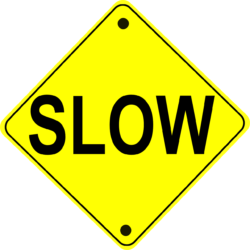THE BEST OF THE GRAMMAR DIVA…..FROM 2016
Since I am busy with my daughter’s baby shower this week and weekend (my first grandchild is due in December), here is a post from a few years back. I hope you enjoy it!
———————————————-
Flat adverbs? Is this yet another grammatical thing we need to know about? Well, yes and no, but it isn’t difficult.

Let’s start at the beginning. Adverbs are the part of speech that “describe” verbs. They usually tell how or when or to what extent. And they can also describe adjectives or other adverbs. And to review, adjectives are the part of speech that usually describe nouns (or pronouns), telling what kind. Here are some examples of adverbs:
- He talks quietly. (Quietly is an adverb that tells how he talks.)
- We will leave soon. (Soon is an adverb that tells when we will leave.)
- He talks extremely quietly. (Extremely is an adverb describing another adverb – quietly – that tells to what extent.)
- She is really pretty. (Here, really is an adverb describing the adjective pretty, telling to what extent.)
You have probably noticed that many (probably most) adverbs end in -ly, especially the ones that tell how or to what extent (as opposed to the ones that tell when, like now, then, soon, and later).
Now, there are also some other words that end in -ly, mainly some adjectives like lovely, lonely, and daily.
So, not all adverbs end in -ly, and not all words that end in -ly are adverbs.
Now, what does this have to do with flat adverbs, and what are they anyway?
Okay. Many of the adverbs that end in -ly are created from the adjective, which has no -ly:
- quiet is an adjective (quiet house), but quietly is an adverb (talk quietly).
- soft is an adjective (soft blanket), but softly is an adverb (speak softly).
- quick is an adjective (quick bunny), but quickly is an adverb (run quickly).
- slow is an adjective (slow turtle), but slowly is an adverb (drive slowly).
You get the idea.
A flat adverb (finally!) (oh, and final is an adjective, and finally is an adverb) is an adverb without an -ly at the end.
Soon, now, then, later, too, very . . . adverbs with no -ly. Easy.
But that is too simple. How about these sentences?
- Drive slow because the roads are slippery. (Should it be slowly?)
- You went fast through those curvy roads.
- You need to come clean about what really happened.
- Stay close to me as we walk through the crowd.
- He hit the ball really hard.
Let’s talk about those flat adverbs:
- Drive slow. Well, you could also have said drive slowly, so is drive slow okay?
- You went fast. Well, there is no fastly. Fast is both an adjective (fast car) and an adverb (drive fast). There is no -ly form at all of this flat adverb.
- Come clean. Here is an adverb where the -ly form is used differently than the flat form. The wound healed cleanly is fine, but you wouldn’t say come cleanly. We just don’t use it that way.
- Stay close. Stay closely doesn’t make sense. However, follow closely does, so the flat adverb and the -ly form are used differently in this case.
- Hit hard. That makes sense. But if you say hardly hit, well, that is really the opposite. So, in this case the flat adverb and the -ly form are opposites!
Flat adverbs used to be more common. Now, if we can use the -ly at the end, we tend to. For example
- The moon is shining brightly – instead of shining bright.
- Drive slowly through the storm – instead of drive slow through the storm.
- Run quickly until you get to the other side of the street – instead of run quick.
So, if you can use the -ly version, it is probably best.
However, you have seen that in some cases the flat adverb and the -ly version have different uses, which is fine (stay close and follow closely, for example). In other cases, they are complete opposites (hit hard and hardly hit), which is also fine. In those cases, using the flat adverb is perfectly fine.
Rule of thumb: If there is an -ly version of the adverb that has the same meaning as using it “flatly” (is that even a word, or did I just make up a new adverb? She sings flat! Not flatly!), use the -ly version, as it is more common these days. If the flat adverb says it best (bestly?) use a flat adverb.



Congratulations
To be grandmother
Thank you!!
What about feel bad vs feel badly? As in I feel bad–my stomach hurts , vs I feel badly that your stomach hurts
In both your examples the adjective “bad” should be used because in both cases, “feel” is being used as a linking verb, or emotion. If you “feel” badly, that means there is something wrong with your fingertips and feel is being used as an action verb. So generally bad is not a flat adverb
Well congratulations from a wannabe/hope to be grandparent!
Thank you!